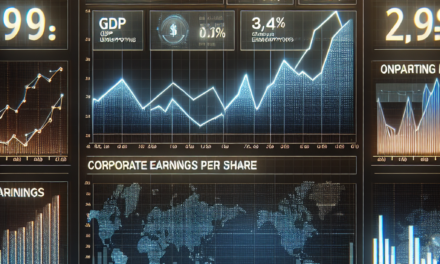“Lithium Prices Set to Stabilize by 2025 as Mine Closures and Slowing EV Sales in China Reshape the Market.”
Introduction
Lithium prices are anticipated to stabilize by 2025, driven by a combination of mine closures and a slowdown in electric vehicle (EV) sales in China. Analysts suggest that the recent surge in lithium demand, fueled by the rapid growth of the EV market, is facing headwinds as production capacity struggles to keep pace with market fluctuations. As several lithium mines are set to close, supply constraints may balance out the demand, leading to a more stable pricing environment. Additionally, the easing of EV sales in China, a major consumer of lithium, is expected to further influence market dynamics, prompting a reassessment of lithium’s price trajectory in the coming years.
Lithium Price Trends: Analyzing the 2025 Stabilization Forecast
Lithium prices have experienced significant volatility in recent years, driven by surging demand for electric vehicles (EVs) and the rapid expansion of battery production. However, analysts are now predicting a stabilization of lithium prices by 2025, influenced by a combination of mine closures and a potential easing of EV sales in key markets, particularly China. This forecast is rooted in a comprehensive analysis of current market dynamics and future projections, which suggest that the lithium market is on the cusp of a transformative phase.
To begin with, the demand for lithium has been primarily fueled by the global shift towards renewable energy and the increasing adoption of electric vehicles. As governments worldwide implement stricter emissions regulations and promote sustainable transportation, the need for lithium-ion batteries has surged. This demand has led to a rapid increase in lithium prices, which reached unprecedented levels in recent years. However, as the market matures, several factors are expected to contribute to a stabilization of prices.
One significant factor influencing the lithium market is the anticipated closure of several lithium mines. As some mining operations reach the end of their productive life or face regulatory challenges, the supply of lithium may tighten. While this might initially suggest a potential increase in prices due to reduced supply, the reality is more nuanced. The closures are likely to coincide with a broader market adjustment, as new mining projects come online and existing operations ramp up production to meet demand. Consequently, the net effect may lead to a more balanced supply-demand equation, ultimately stabilizing prices.
In addition to mine closures, the easing of EV sales in China is another critical element in the forecast for lithium price stabilization. China has been the largest market for electric vehicles, driving a significant portion of global lithium demand. However, recent trends indicate a potential slowdown in EV sales growth, influenced by various factors such as market saturation, economic conditions, and changing consumer preferences. As the pace of EV adoption moderates, the corresponding demand for lithium may also level off, contributing to a stabilization of prices.
Moreover, advancements in battery technology and recycling processes are expected to play a pivotal role in shaping the lithium market landscape. As manufacturers explore alternative materials and improve battery efficiency, the reliance on lithium may decrease over time. Additionally, the growing emphasis on battery recycling could lead to a more circular economy, where lithium is recovered and reused, further alleviating pressure on raw material demand. These developments are likely to create a more sustainable and stable market environment for lithium.
Furthermore, geopolitical factors and trade dynamics cannot be overlooked in this analysis. The lithium supply chain is often influenced by international relations and trade policies, which can impact production and distribution. As countries seek to secure their supply chains and reduce dependency on foreign sources, investments in domestic lithium production may increase. This shift could lead to a more resilient market, capable of withstanding external shocks and contributing to price stability.
In conclusion, while the lithium market has been characterized by significant fluctuations, the outlook for stabilization by 2025 appears plausible. The interplay of mine closures, easing EV sales in China, advancements in technology, and geopolitical considerations will shape the future of lithium prices. As these factors converge, the market is likely to transition towards a more balanced state, providing a clearer path for stakeholders navigating the complexities of this essential resource.
Impact of Mine Closures on Lithium Supply and Prices
The global lithium market is currently experiencing significant fluctuations, primarily driven by the interplay of supply and demand dynamics. As analysts project a stabilization of lithium prices by 2025, one of the critical factors influencing this trend is the impact of mine closures on lithium supply. The mining sector has faced numerous challenges, including regulatory hurdles, environmental concerns, and operational inefficiencies, which have led to the temporary or permanent closure of several lithium extraction facilities. These closures have created a ripple effect throughout the supply chain, ultimately affecting lithium prices.
To understand the implications of mine closures, it is essential to recognize the role of lithium as a vital component in the production of batteries, particularly for electric vehicles (EVs). As the demand for EVs surged in recent years, driven by a global push for sustainable energy solutions, the need for lithium skyrocketed. However, the recent downturn in EV sales, particularly in China, has prompted a reassessment of lithium demand forecasts. This shift in market sentiment has been compounded by the closure of key lithium mines, which has further constrained supply.
The closures have not only reduced the immediate availability of lithium but have also raised concerns about the long-term sustainability of lithium production. As existing mines are shuttered, the industry faces the challenge of ramping up production in new or underutilized sites. This transition is often fraught with difficulties, including the time required for exploration, development, and regulatory approval. Consequently, the combination of reduced supply from mine closures and the potential lag in new production coming online creates a complex landscape for lithium prices.
Moreover, the impact of mine closures is not uniform across the globe. Regions with abundant lithium resources, such as Australia and South America, may experience different outcomes compared to those with less established mining infrastructure. For instance, while Australia has been able to maintain a relatively stable production level, the situation in South America, particularly in countries like Argentina and Chile, has been more precarious due to political and environmental challenges. These regional disparities further complicate the overall supply picture and contribute to price volatility.
As the market adjusts to these changes, analysts suggest that the stabilization of lithium prices by 2025 will likely be influenced by a combination of factors, including the gradual reopening of closed mines and the development of new projects. Additionally, advancements in lithium extraction technologies and recycling methods may also play a crucial role in enhancing supply. The industry is increasingly recognizing the importance of sustainable practices, which could mitigate some of the supply constraints caused by mine closures.
In conclusion, the impact of mine closures on lithium supply and prices is a multifaceted issue that reflects broader trends within the global market. While the immediate effects of these closures have contributed to price volatility, the anticipated stabilization by 2025 suggests that the industry is poised for a period of adjustment. As new production sources come online and demand patterns evolve, stakeholders will need to navigate the complexities of the lithium market carefully. Ultimately, the interplay between supply constraints and demand fluctuations will shape the future of lithium pricing, making it a critical area for ongoing analysis and strategic planning.
Easing EV Sales in China: Implications for Lithium Demand
As the global market for electric vehicles (EVs) continues to evolve, the dynamics of lithium demand are becoming increasingly complex, particularly in China, which has long been a dominant player in the EV sector. Recent trends indicate a potential easing of EV sales in China, a development that carries significant implications for lithium demand. Analysts suggest that this slowdown may be influenced by a combination of factors, including market saturation, regulatory changes, and shifting consumer preferences. As these elements converge, the demand for lithium, a critical component in EV batteries, is expected to experience a corresponding adjustment.
The Chinese EV market has witnessed remarkable growth over the past decade, driven by government incentives, technological advancements, and a growing consumer base increasingly inclined toward sustainable transportation. However, as the market matures, the rapid growth rates observed in previous years are beginning to level off. This stabilization is not merely a reflection of market dynamics but also a response to broader economic conditions, including inflationary pressures and supply chain disruptions that have affected consumer purchasing power. Consequently, the anticipated decline in EV sales could lead to a decrease in lithium demand, as manufacturers reassess their production strategies in light of changing market conditions.
Moreover, the Chinese government has implemented new policies aimed at regulating the EV market more stringently. These regulations may include stricter emissions standards and a reevaluation of subsidies that have historically bolstered EV sales. As these policies take effect, they may inadvertently contribute to a slowdown in sales growth, further impacting the demand for lithium. In this context, manufacturers may find themselves grappling with excess inventory and a need to recalibrate their production levels, which could lead to a temporary surplus of lithium in the market.
In addition to regulatory changes, consumer preferences are also shifting. As the initial excitement surrounding EVs begins to wane, consumers are becoming more discerning, seeking vehicles that offer not only sustainability but also value and performance. This shift may result in a more competitive landscape, where traditional internal combustion engine vehicles regain some market share, thereby reducing the immediate demand for lithium-ion batteries. Consequently, the interplay between consumer behavior and market offerings will play a crucial role in shaping the future of lithium demand.
Furthermore, the anticipated easing of EV sales in China is likely to have ripple effects throughout the global lithium supply chain. As one of the largest consumers of lithium, any significant changes in China’s demand will inevitably influence global prices and availability. Analysts predict that as the market adjusts to these new realities, lithium prices may stabilize by 2025, reflecting a balance between supply and demand. This stabilization could provide a more predictable environment for both producers and consumers, allowing for strategic planning and investment in lithium extraction and processing.
In conclusion, the implications of easing EV sales in China are multifaceted, affecting not only lithium demand but also the broader landscape of the EV market. As manufacturers navigate these changes, the interplay of regulatory policies, consumer preferences, and market dynamics will be critical in determining the future trajectory of lithium prices and availability. While the immediate outlook may suggest a decline in demand, the long-term prospects for lithium remain tied to the ongoing evolution of the global automotive industry and the persistent push toward sustainable energy solutions.
Analyst Predictions: Factors Influencing Lithium Price Stabilization
Analysts predict that lithium prices are likely to stabilize by 2025, influenced by a combination of mine closures and a slowdown in electric vehicle (EV) sales in China. As the demand for lithium, a critical component in rechargeable batteries, has surged in recent years, driven primarily by the rapid expansion of the EV market, the dynamics of supply and demand are now shifting. This shift is expected to play a significant role in determining the future trajectory of lithium prices.
One of the primary factors contributing to the anticipated stabilization of lithium prices is the recent trend of mine closures. Several lithium mining operations, particularly those that are less economically viable, have been forced to shut down due to rising operational costs and fluctuating market conditions. These closures are expected to reduce the overall supply of lithium in the market, which could create a more balanced supply-demand equation. As a result, the pressure on prices may begin to ease, allowing for a more stable pricing environment.
In addition to mine closures, the easing of EV sales in China is another critical factor influencing lithium price stabilization. China has been the largest market for electric vehicles, driving significant demand for lithium-ion batteries. However, recent reports indicate a slowdown in EV sales growth, attributed to various factors such as regulatory changes, market saturation, and shifting consumer preferences. As the pace of EV adoption slows, the demand for lithium may also begin to plateau, further contributing to a stabilization of prices. This deceleration in demand could provide a necessary counterbalance to the supply fluctuations caused by mine closures.
Moreover, the global push for sustainability and the transition to renewable energy sources are also shaping the lithium market. Governments and industries are increasingly focusing on developing alternative battery technologies and recycling methods, which could reduce reliance on newly mined lithium. Innovations in battery chemistry, such as solid-state batteries, may also emerge as viable alternatives, potentially diminishing the demand for traditional lithium-ion batteries. As these technologies develop, they could lead to a more diversified battery supply chain, ultimately influencing lithium prices.
Furthermore, geopolitical factors and trade policies are playing a role in the lithium market landscape. Countries rich in lithium resources, such as Australia and Chile, are navigating complex regulatory environments and international trade agreements that can impact production levels and export capabilities. Any changes in these policies could either exacerbate supply constraints or facilitate increased production, thereby influencing price stability. Analysts are closely monitoring these developments, as they could have significant implications for the global lithium market.
In conclusion, the stabilization of lithium prices by 2025 is expected to be shaped by a confluence of factors, including mine closures, a slowdown in EV sales in China, advancements in alternative battery technologies, and geopolitical influences. As the market adjusts to these changes, stakeholders will need to remain vigilant and adaptable to navigate the evolving landscape. While the future of lithium prices remains uncertain, the interplay of these elements suggests a potential for greater stability in the coming years, providing a more predictable environment for both producers and consumers alike.
The Role of Global Markets in Lithium Price Dynamics
The dynamics of lithium prices are intricately linked to global market trends, influenced by a myriad of factors ranging from supply chain disruptions to shifts in consumer demand. As the world increasingly pivots towards renewable energy and electric vehicles (EVs), lithium has emerged as a critical component in battery technology, driving its demand to unprecedented levels. However, the interplay between supply and demand is complex, and recent developments suggest that the lithium market may be on the cusp of stabilization by 2025.
One of the primary drivers of lithium prices has been the rapid expansion of the EV market, particularly in China, which has been the largest consumer of lithium-ion batteries. The surge in EV sales has created a corresponding spike in lithium demand, leading to significant price increases over the past few years. However, analysts are now observing a potential easing in EV sales in China, which could have profound implications for lithium prices. As the Chinese government implements stricter regulations and incentives for EV production, the market may experience a recalibration, leading to a more balanced supply-demand equation.
Moreover, the global supply chain for lithium is undergoing significant changes, particularly as several major lithium mines face closures or production slowdowns. These closures are often the result of environmental concerns, regulatory challenges, or economic viability issues. As a result, the reduction in supply from these mines could initially exacerbate price volatility. However, in the long term, these adjustments may lead to a more sustainable and stable market as remaining producers adapt to the new landscape. The anticipated mine closures highlight the importance of sustainable mining practices and the need for innovation in extraction technologies, which could mitigate some of the supply constraints.
In addition to supply-side factors, global economic conditions play a crucial role in shaping lithium price dynamics. Economic slowdowns or fluctuations in key markets can lead to reduced industrial activity and lower demand for lithium. For instance, if major economies experience a downturn, the demand for consumer goods, including electric vehicles, may decline, further impacting lithium prices. Conversely, a robust economic recovery could reignite demand, pushing prices higher once again. Thus, the interconnectedness of global markets means that lithium prices are susceptible to a range of external economic factors.
Furthermore, geopolitical tensions and trade policies can also influence lithium prices. As countries vie for dominance in the EV market, trade agreements and tariffs can create barriers or incentives for lithium trade. For example, if a major lithium-producing country imposes export restrictions, it could lead to supply shortages in other regions, driving prices up. Conversely, increased cooperation among nations in the pursuit of green technologies could foster a more stable supply chain, ultimately benefiting lithium prices.
In conclusion, the role of global markets in lithium price dynamics is multifaceted and ever-evolving. As analysts predict a stabilization of lithium prices by 2025, it is essential to consider the various factors at play, including shifts in EV sales, mine closures, and broader economic conditions. The interplay between these elements will not only shape the future of lithium pricing but also influence the trajectory of the renewable energy sector as a whole. As stakeholders navigate this complex landscape, a keen understanding of global market trends will be crucial for making informed decisions in the lithium space.
Future of Lithium Mining: Challenges and Opportunities
The future of lithium mining is poised at a critical juncture, characterized by both challenges and opportunities that will shape the industry in the coming years. As the demand for lithium, a key component in batteries for electric vehicles (EVs) and renewable energy storage, continues to rise, the mining sector faces significant hurdles that could impact production and pricing. Analysts predict that while lithium prices may stabilize by 2025, the path to achieving this equilibrium is fraught with complexities that require careful navigation.
One of the primary challenges facing lithium mining is the environmental impact associated with extraction processes. As awareness of climate change and ecological degradation grows, regulatory scrutiny on mining operations is intensifying. Governments and environmental organizations are increasingly advocating for sustainable practices, which may necessitate significant investments in cleaner technologies and methods. Consequently, mining companies must adapt to these evolving standards, balancing the need for profitability with their responsibility to minimize environmental harm. This shift towards sustainability presents an opportunity for innovation, as companies that successfully implement eco-friendly practices may gain a competitive edge in the market.
In addition to environmental concerns, geopolitical factors also play a crucial role in the future of lithium mining. The concentration of lithium reserves in specific regions, particularly in South America and Australia, raises questions about supply chain stability. Political instability, trade tensions, and regulatory changes in these key mining countries can disrupt production and lead to fluctuations in global lithium supply. As a result, companies are exploring diversification strategies, including investments in new mining projects in different regions and the development of alternative sources of lithium, such as recycling used batteries. This diversification not only mitigates risks associated with geopolitical uncertainties but also opens new avenues for growth in the industry.
Moreover, the anticipated easing of EV sales in China, one of the largest markets for lithium-ion batteries, presents both a challenge and an opportunity for the mining sector. While a slowdown in demand could lead to short-term price volatility, it may also prompt manufacturers to seek more efficient and cost-effective ways to produce batteries. This shift could drive innovation in lithium extraction and processing technologies, ultimately enhancing the overall efficiency of the supply chain. As companies invest in research and development, the potential for breakthroughs in lithium recovery methods could lead to increased production rates and lower costs, benefiting the industry as a whole.
Furthermore, the growing emphasis on circular economy principles is reshaping the landscape of lithium mining. As the focus shifts towards recycling and reusing materials, mining companies are beginning to explore partnerships with battery manufacturers and recycling firms. By collaborating on initiatives that promote the recovery of lithium from spent batteries, the industry can reduce its reliance on virgin materials and minimize waste. This collaborative approach not only addresses environmental concerns but also creates a more resilient supply chain, ensuring that lithium remains accessible even as demand fluctuates.
In conclusion, the future of lithium mining is marked by a complex interplay of challenges and opportunities. As the industry grapples with environmental regulations, geopolitical uncertainties, and shifting market dynamics, it must also embrace innovation and collaboration to thrive. By navigating these challenges effectively, the lithium mining sector can position itself for sustainable growth, ultimately contributing to the broader transition towards a greener and more sustainable energy future.
Strategic Investments in Lithium: Preparing for 2025 and Beyond
As the global demand for lithium continues to rise, driven primarily by the electric vehicle (EV) market, strategic investments in lithium resources are becoming increasingly critical. Analysts predict that by 2025, lithium prices are expected to stabilize, influenced by a combination of mine closures and a potential easing of EV sales in China. This anticipated stabilization presents both challenges and opportunities for investors and stakeholders in the lithium sector.
In recent years, the lithium market has experienced significant volatility, largely due to fluctuating demand from the EV industry and supply chain disruptions. As manufacturers ramped up production to meet the surging demand for electric vehicles, lithium prices soared to unprecedented levels. However, as the market begins to mature, it is essential for investors to adopt a forward-looking approach that considers the evolving landscape of lithium supply and demand dynamics.
One of the key factors influencing the future of lithium prices is the anticipated closure of several lithium mines. These closures, driven by environmental concerns and regulatory pressures, could lead to a tightening of supply in the short term. Consequently, while some analysts foresee a dip in prices due to reduced demand from the Chinese market, others suggest that the impact of mine closures may counterbalance this trend, ultimately leading to a stabilization of prices by 2025. This complex interplay between supply constraints and demand fluctuations underscores the importance of strategic investments in lithium resources.
Moreover, as the EV market in China begins to show signs of easing, it is crucial for investors to reassess their strategies. The Chinese government has implemented various policies aimed at promoting the adoption of electric vehicles, but recent trends indicate a potential slowdown in sales growth. This shift could have significant implications for lithium demand, as China remains the largest consumer of lithium for battery production. Investors must remain vigilant and adaptable, recognizing that changes in consumer behavior and government policies can dramatically influence market conditions.
In light of these developments, companies involved in lithium extraction and processing are increasingly focusing on innovation and efficiency. By investing in advanced technologies and sustainable practices, these companies can enhance their competitive edge and mitigate the risks associated with fluctuating prices. Furthermore, strategic partnerships and collaborations within the industry can facilitate knowledge sharing and resource optimization, ultimately contributing to a more resilient lithium supply chain.
As we look toward 2025 and beyond, it is essential for investors to consider the broader implications of geopolitical factors and global economic trends on the lithium market. The transition to renewable energy sources and the growing emphasis on sustainability are likely to shape the future of lithium demand. Investors who align their strategies with these trends will be better positioned to capitalize on emerging opportunities in the sector.
In conclusion, while the lithium market is poised for stabilization by 2025, the path to achieving this equilibrium is fraught with challenges and uncertainties. Strategic investments in lithium resources, coupled with a keen awareness of market dynamics and technological advancements, will be crucial for stakeholders aiming to navigate this evolving landscape. By adopting a proactive and informed approach, investors can not only prepare for the anticipated stabilization of lithium prices but also position themselves for long-term success in a rapidly changing market.
Q&A
1. **Question:** What is the current trend in lithium prices as of 2023?
**Answer:** Lithium prices are expected to stabilize by 2025 after experiencing significant fluctuations.
2. **Question:** What factors are contributing to the stabilization of lithium prices?
**Answer:** Mine closures and easing electric vehicle (EV) sales in China are key factors contributing to the stabilization.
3. **Question:** How have mine closures impacted lithium supply?
**Answer:** Mine closures have reduced the overall supply of lithium, which can help balance the market.
4. **Question:** What is the expected impact of easing EV sales in China on lithium demand?
**Answer:** Easing EV sales in China may lead to a decrease in demand for lithium, contributing to price stabilization.
5. **Question:** What role do analysts play in predicting lithium price trends?
**Answer:** Analysts assess market conditions, supply and demand dynamics, and industry developments to forecast lithium price trends.
6. **Question:** By what year do analysts predict lithium prices will stabilize?
**Answer:** Analysts predict that lithium prices will stabilize by 2025.
7. **Question:** What is the significance of lithium in the context of the EV market?
**Answer:** Lithium is a critical component in lithium-ion batteries, which are essential for electric vehicles, making its price fluctuations significant for the EV market.
Conclusion
Analysts predict that lithium prices are expected to stabilize by 2025 due to a combination of mine closures and a slowdown in electric vehicle (EV) sales in China. The anticipated reduction in demand from the EV sector, coupled with supply constraints from mine closures, is likely to balance the market. This stabilization may lead to a more sustainable pricing environment for lithium, essential for battery production, as the industry adjusts to changing market dynamics.





